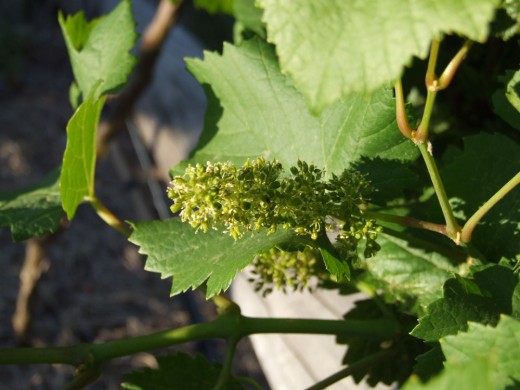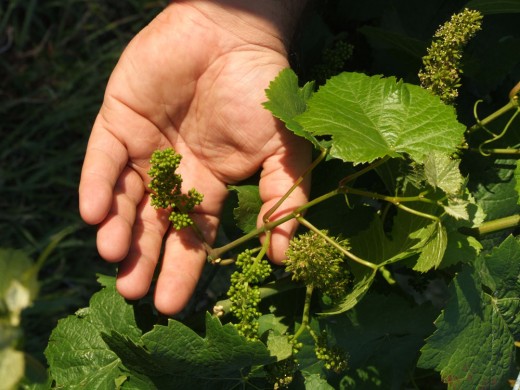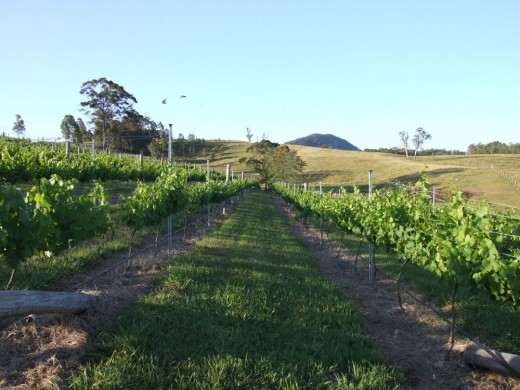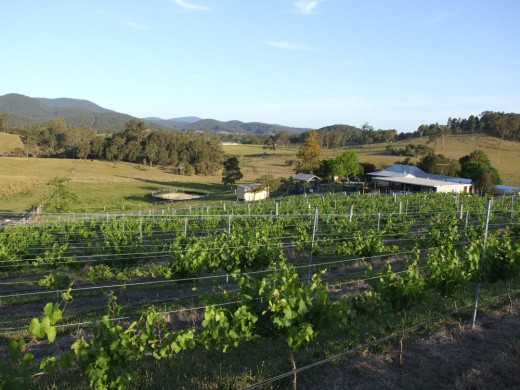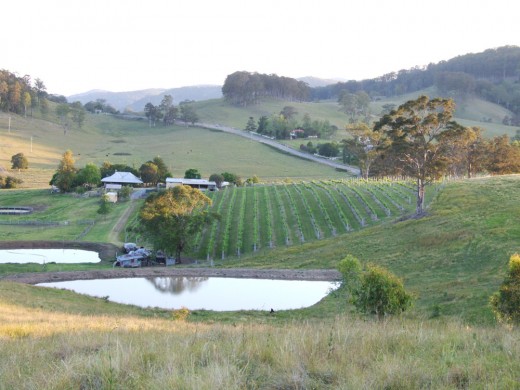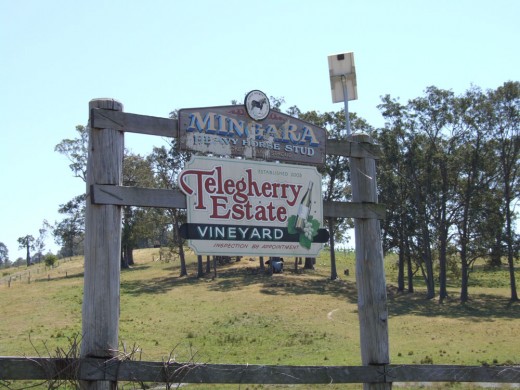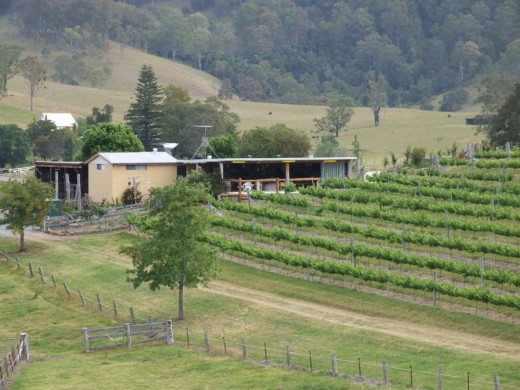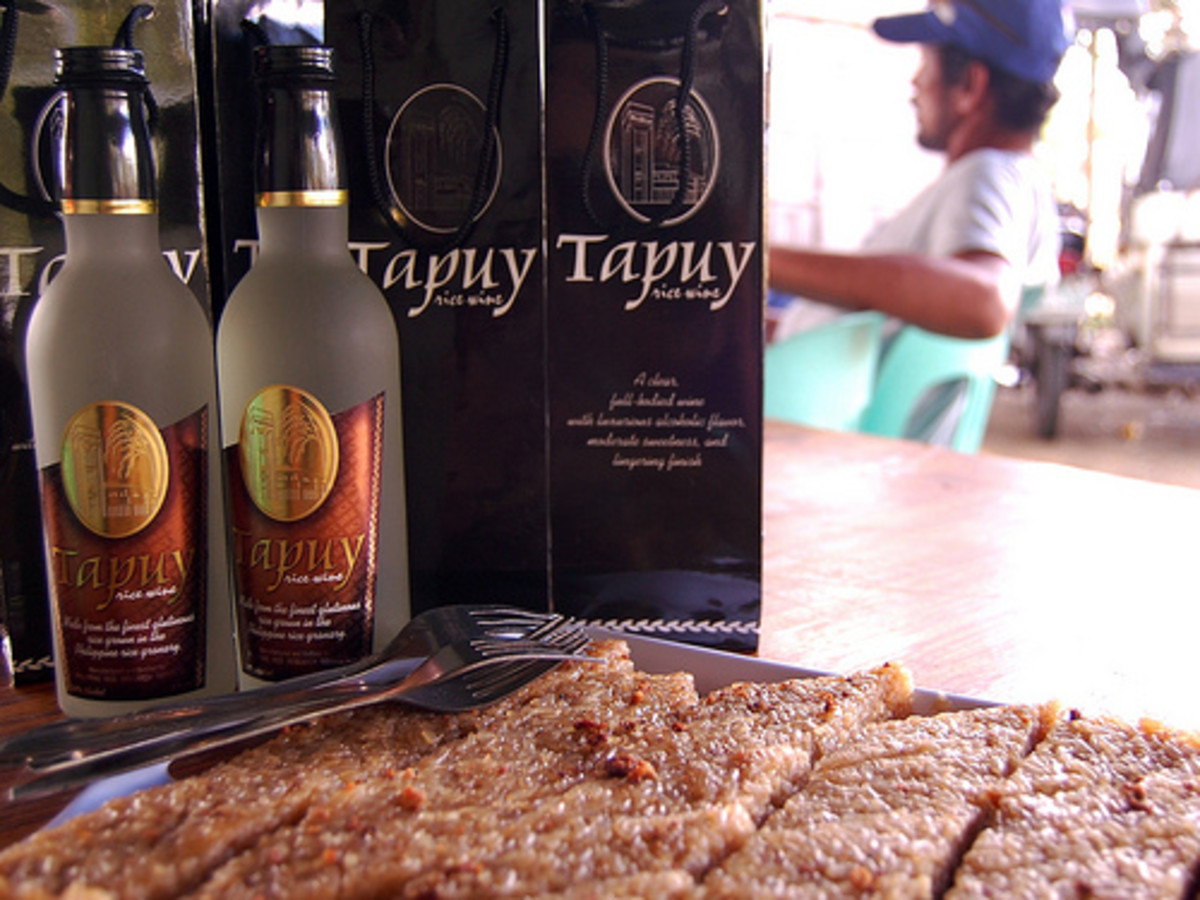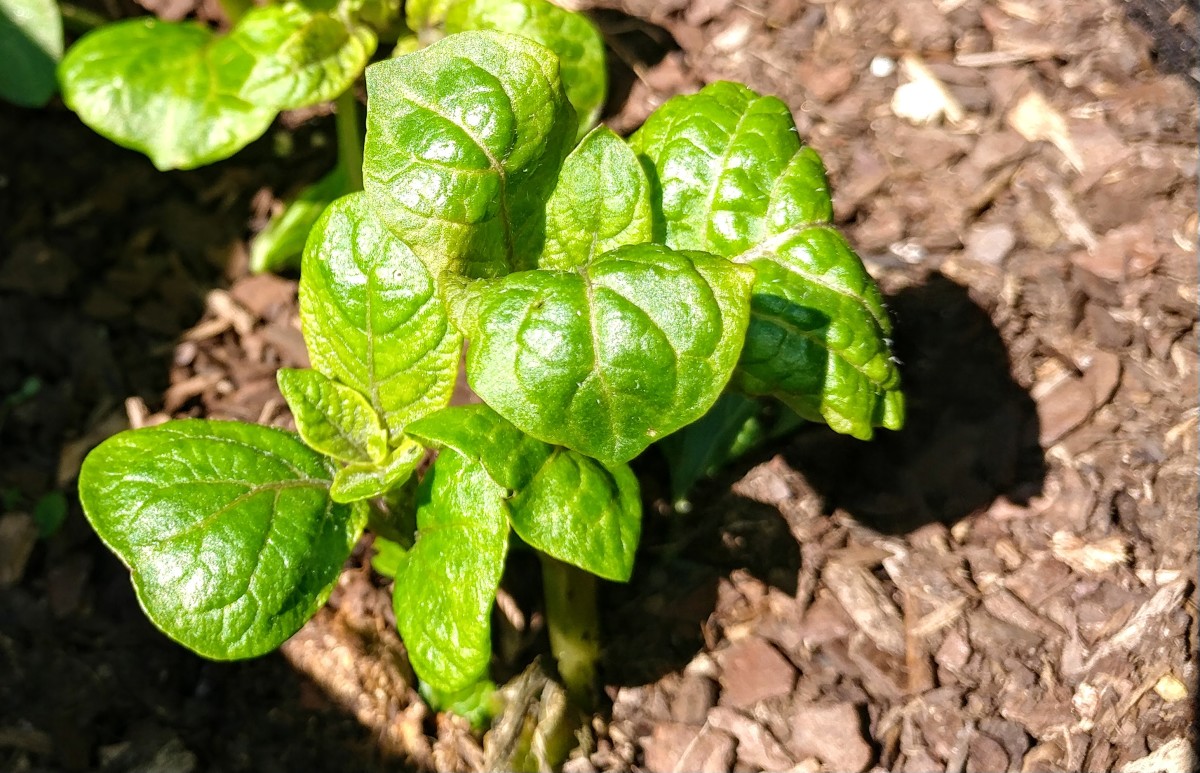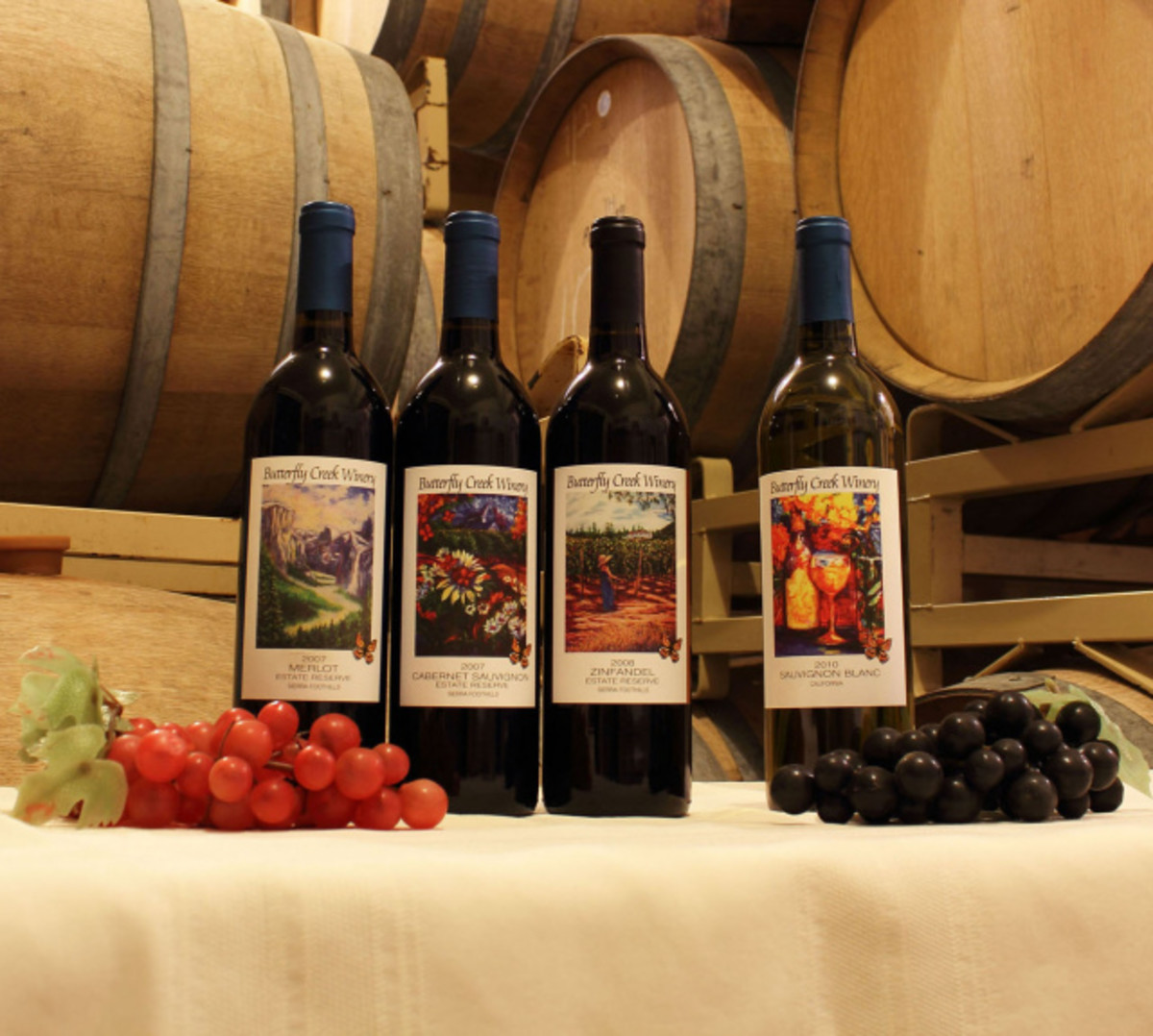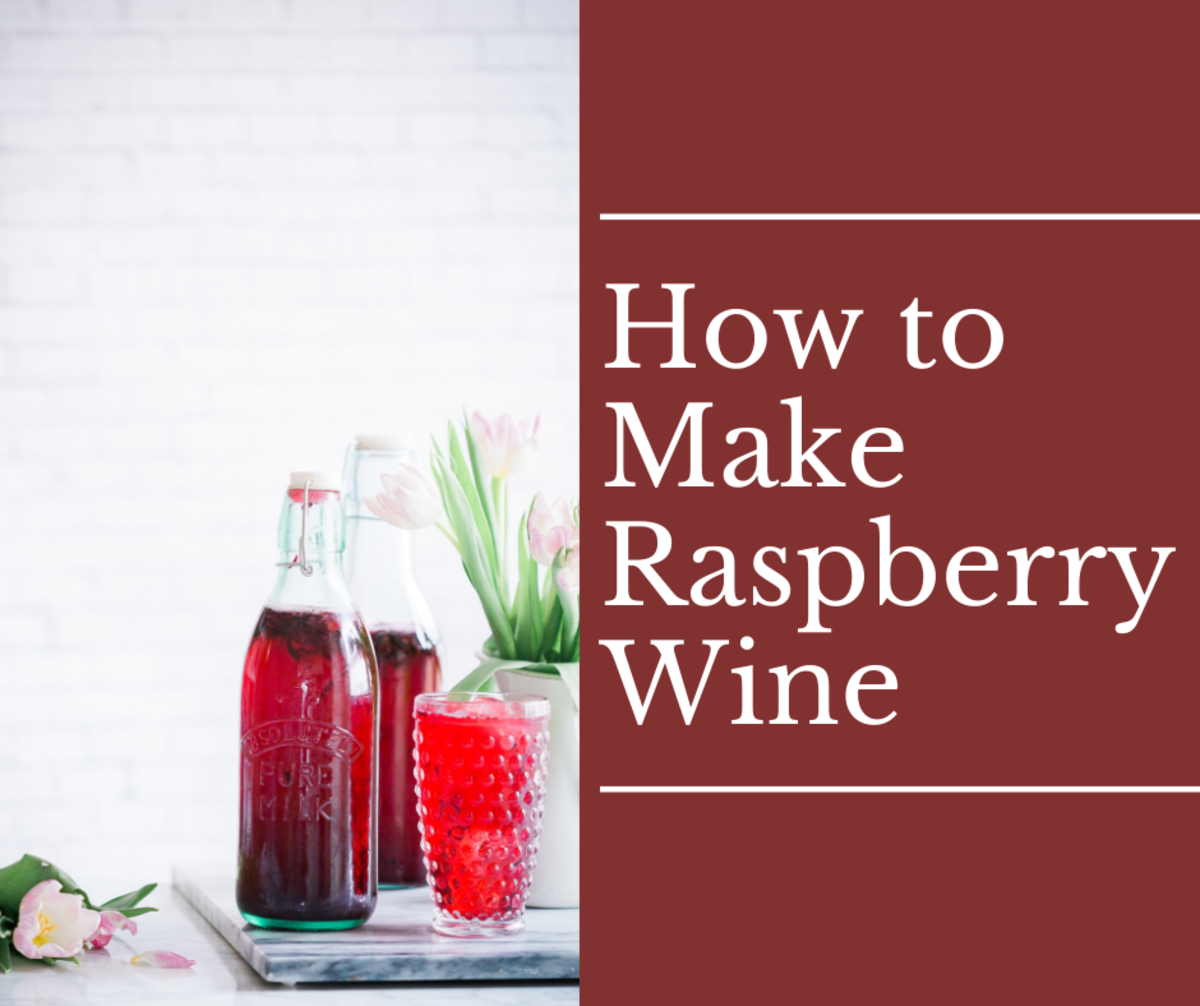How Wine Is Made

How To Make Wine
It starts with the grape. But not just any grape. A carefully and specifically chosen grape whose vine will complement the soil and the climate.
At Telegherry they've chosen the Pinot Gris. But they grafted a southern climate variety to a northern climate rootstock. The reason being is they have a high volume in fruit and ripen earlier. And it would be less suspectible to humidity damage.
In the local area there tends to get a lot of rain in February, about the time the grapes would normally have ripened to maturity. But they avoid this with an earlier harvest in January.
Please note:
This hub is a look at one way how wine is made. There are many ways in which one can approach the practice of winemaking, this is just one of them. Please keep in mind that this vineyard is situated in Australia in the Southern Hemisphere. So seasons are half a years difference to the Northern Hemisphere.
Training a Grapevine
While a trellis can be erected soon after planting it is best to build one before. Especially if a person wants a well planned vineyard. If not on flat ground its in your own best interests to have it running along a hill so each line is fairly straight, level and even.
The treated posts (to prevent rot and termites) should be 8 foot in length and around 3 to 4 inches in diameter. End posts should be sunk 3 feet in the ground and braced. The others can be sunk 2 feet and spaced up to 20 feet apart.One or two lengths of galvanized wire is stretched horizontally along the trellis.Each row is spaced approximately 8 foot apart.In the first year grape vine growth and the the development of a healthy root system and a straight trunk is the primary objective.If pruned correctly the main shoot can grow rapidly, saving as much as a year in establishing a healthy vine.If left unpruned the nutrients are distributed to numerous buds. This results in a vine that produces a lot of weak shoots and small, poorly ripened fruit clusters. Pruning reduces the number of buds so the food reserves are concentrated in those that remain.
Growing
It takes a few years before the grapes have matured enough to make into a good wine. In the meantime they have less taste and the yield is quite low. At Telegherry they're a month and a half away from their second harvest. The first two years the vines were being established. The third year the crop was wiped out with a hailstorm. The fertile soil and the right conditions allowed the vines to recover quickly and the fourth year brought with it its first harvest.
This seasons harvest is shaping up to be a bumper crop. Looking to be a 50% increase on yield.
The grapes are grown on a trellis. Long straight lines of trellis are set up. Telegherry Vineyard Estate has approximately 2500 vines on 3.5 acres.
At Telegherry the vines were planted on the eastern side of the hill because if there is frost it will burn off quicker with the sunrise.
The first year doesn't require pruning as the vine is left to grow strong. Abundant leaves and stems result in a strong root system on immature grape vines.
In the second and third years the vine is vigorously pruned so that it becomes an upright stem with two sets of side branches. In the winter months it resembles a dead lifeless t shaped trunk. In spring it comes to life with green foliage and the budding of the fruit.
During the course of the season when the fruit is growing the stems continue to grow at a phenomenal rate. These are not needed as they do not carry any additional fruit and they often hang out into the paths between the vine rows. These are called laterals and they are cut back on a regular basis.
While the fruit does appreciate the shade from the harsh midday sun too much foliage can cause mold and mildew problems after rain or from humidity. A stiff breeze after rain will dry up the excess moisture allowing the air to circulate around the fruit.
Kinkead Ridge
Watering
At Telegherry the rainfall has been sufficient enough for 75% over the course of the year. But occasionally there is a dry spell in the weather. This is when an irrigation system is the difference between life and death for both the fruit and the vines themselves.
Too much water is not a good thing though as making them suffer a little makes them into a hardier plant. The water is drawn from a dam and pumped up the hill in three stages. The pump is unable to give enough push to irrigate the whole plot so it is divided into three sections: bottom, middle and top. The top gets the longest duration of water supply. As there's a lot of run off that then waters the middle and bottom sets of rows (there are 32 rows of vines at Telegherry).If the dam runs low there are two more dams further uphill which can be fed into the pump station dam. If a prolonged drought hits there's also bore water (pumped from underground) that can be used to fill the dam. The water from underground is high in salt and can't be used straight on the vines. That being the case the dam is replenished when it drops down to the halfway mark and then 'shandied' with the bore water.If worse comes to worse there is also the town water supply. But that is an option that comes at an expense. Though it's better than seeing your vineyard die if a drought hits.Three to four weeks prior to harvest (depending on the weather) there is no watering, as it will improve the flavor of the grape. Too much water also dilutes the flavor.Photos taken around Telegherry Vineyard Estate
Click thumbnail to view full-size






The benefits of fertigation over traditional methods:
- Reduces the amount of labor required in comparison to the application of granular or sprayed fertilizers.
- Reduction in the amount of fertilizer and chemicals needed, wasted and leaching.
- Reduction in water usage due to increased root mass being able to trap and hold water
- You can get the same results from inexpensive liquids as you can from expensive time release granular fertilizers.
- Even distribution results in a more uniform size and color of the fruit.
Fertilizer
The property of Telegherry Estate Vineyards boasts a very rich soil and rarely needs extra fertilizer to promote plant growth. But it's always good to have a contingency plan.
In this case the back up plan is worm urine. It comes in a barrel and can be tapped into the water supply and fed straight through the irrigation system and pumped to the plants.
This method of fertilization is called "fertigation" and sees a marked increase nutrient absorption to other traditional fertilizing methods.
Vermicompost is an ecofriendly natural fertilizer, biodegradable and organic that has no adverse effect on soil, plant and environment.
Spraying
To combat mildew, botrytis, caterpillars and snails the vines need to be sprayed. Particularly after a wet spell when there has been no breeze or wind to dry off the vines.
A 400 litre tank sprayer is half filled (200 litres is manageable when towing with an ATV along the rows on an incline) with water and the following ingredients: copper, sulphur and an (oil based) sticking agent.
Making Wine in Colorado
Netting
Approximately 6 weeks before harvest the vines are netted. This is when the fruit is beginning to ripen and tempts the local wildlife as the sugars (Baume) increase.
Locally the worst offenders that are attracted by the ripening fruit are kangaroos, goannas and parrots.
Developed by French pharmacist Antoine Baumé in 1768 the Baumé scale is a hydrometer scale used to measure the density of various liquids. In wine-making to get an indication of grape ripeness and sugar content they measure the density of grape must. Source
Harvesting
When the fruit is mature the "baume" is tested. When it is approximately 13% baume (in winemaking that converts to its alcohol content) the harvest takes place.
Last years harvest yielded 2.3 tonne. Which took about 4 hour to pick. This year it looks to be at least 3.5 tonne.
Wine Production
The wine itself isn't produced on site. As with many smaller boutique vineyards they leave the actual wine production to the experts (it's a hard enough job just growing the grapes).
After the harvest the fruit is trucked off to the wine production plant.
When they receive it, it goes through a destemmer/crusher. Which as the process hints at, involves removing stems and crushing the grape.
The 'juice' is put into a vat for storage.
Various additives are combined with the mix.
The wine is then "aged".
The aging process varies according to the variety of grape and the winemaker. For the ensuing Telegherry Estate wine it was 10 months.
Grape pressing the old fashioned way...
The Fermentation Process
Grapes are crushed in stainless steel machines which open the fruit gently so that the seeds are not broken. The seeds, skins and stems are filtered, and the clear grape juice piped into fermenting tanks.
In the fermenting vats the grape sugar is converted into alcohol. The type of wine to be made determines how long the juice is allowed to ferment.For sweet wines, like sauterines, fermentation is stopped early. With dry wines like hock and riesling all the sugar may be allowed to convert into alcohol.During fermentation, sediment may be removed several times and the wine purified by various processes before being set to mature. After fermentation red wines are matured in oak casks for a year or more before bottling. A very good bottled wine may be stored for several more years before being released.White wines are usually matured in stainless-steel tanks and bottled earlier than the the reds.Design and Presentation
In the meantime when this aging process is occurring the vineyard has a brief off-season respite. And then its back into tending to the crop. But there's other things to consider before the wine is bottled and that is the bottle itself.
The vineyard owner has to decide what sort of bottle he or she would like to have their wine bottled in. Even the the color of the cap has to be considered.There are also costs involved. For both the bottle and the cap.The design for the labels need to be complete prior to the bottling stage. So a designer comes up with concepts which the vineyard owner must approve. Proofs are made and if the owner is happy with the result he signs off on the proofs.Once the artwork is complete a die is made. And the labels are printed in roll form on the printing presses.All this is delivered to the bottlers. And they are affixed with a machine during the bottling stage.Bottling
After the juice is delivered by tanker to the bottler and prior to it being bottled the wine is tested, for contamination and purity.
The process is automated from the filling of the bottles, to the capping and the labels being stuck on both front and back.After this process is complete the bottles are boxed and put on a pallet for delivery back to the wine grower.We're expecting 1,800 bottles any day now.This content is accurate and true to the best of the author’s knowledge and is not meant to substitute for formal and individualized advice from a qualified professional.
© 2007 Glen

